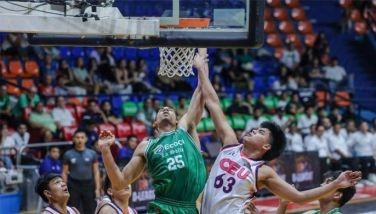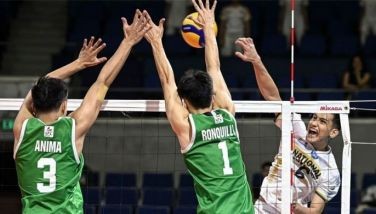PBA: The new 42
In early 1975, nine team owners of the Manila Industrial and Commercial Athletic Association (MICAA) gathered in secret. They were gravely unhappy that the Basketball Association of the Philippines (BAP) was appropriating the best players in the land – their players – for the national team, and abusing their kindness.
“Sometimes, they would return our players to us, and the players would already have a sprained elbow, sprained knee, and so on,” recalled former Galerie Dominique team owner Nikki Coseteng, whose father Emerson was a pioneering PBA team owner.
The situation was so bad that some players did not get to suit up for their mother teams at all in 1974, as they were competing or playing tune-up games in Japan and other countries. At the time, professional basketball did not exist in Asia. In fact, the MICAA itself had players who were also employees of their companies. It was a rich man’s playground, and the players fought for bragging rights. The best players were earning about P2,500 a month, and you were lucky if your deal got you a car, as well.
“It was tough, you know,” former senator Robert Jaworski told this writer in 2014. “We had to punch the clock, then attend practice and play on the weekends. But we always did our best.”
A few people were privy to the on-going conversations that eventually became a rebellion. There seemed to be only one other option, to form a professional league.
“The team owners were upset that they were paying players’ salaries and not getting the full benefit,” says former PBA deputy commissioner Tommy Manotoc. “The only alternative was to form a pro league, so the players could not be taken for the national team.”
“I was invited to a meeting by some of the team owners,” recalled columnist Recah Trinidad. “The PBA was born from that rebellion.”
So 42 years ago yesterday, the Philippine Basketball Association played its first doubleheader at the Araneta Coliseum. The Big Dome was the world’s largest indoor coliseum at the time of its construction, and was the venue of choice for any large gathering, performance or sports event. It was the logical choice for a league that knew it would draw in the fans by the truckload.
Just to show how far things have come, less than a decade before the PBA’s birth, Flash Elorde was reigning world junior lightweight champion. To let people know when he won a fight in the age before television had penetrated almost 90 percent of households, fire engines had to race around town, bells ringing and horns blazing. In the league’s formative years, people stood (or sat) in the pavement outside appliance stores, who graciously left all their television sets on at night, allowing people to favorite basketball teams in action.
In 1975, there were no mobile phones, or even those ubiquitous flyovers along EDSA. Cars were a luxury, and many future PBA stars themselves couldn’t even afford the price of admission.
“I remember when I was in Grade 6, my friends and I would wait outside the players’ entrance at Araneta,” remembered two-time league MVP Benjie Paras. “We would wait for the coaster of Crispa to arrive, then the vehicle of Toyota, just to get a glimpse of the players. After that, we would go home, because we couldn’t afford to buy tickets.”
The games were very rough, and it was not uncommon for players to get into fights frequently. Teams were a blend of rough-hewn veterans who grew up learning tricks of the game in the streets, and former varsity players who had a more technical understanding of basketball. But all agreed that, once you chose to go up into the air, gravity would not be the only force that would bring you down.
“We used to have a saying,” said former senator and league pioneer Freddie Webb. “God will take care of you.”
The PBA has been through so much in more than four decades, from a low of six teams at one point to an all-time high of 12 franchises today. It has overcome energy crises, political upheavals, and extremes of weather. It has expanded into several countries along with its exploding OFW audience. It has regularly brought in live audiences of over 20,000 and a record of over 52,000. It has bridged generations, and has become a habit. Despite the rapid expansion of competitive programming and advent of digital technology, the league continues to thrive. Now, it is difficult to imagine life in the Philippines without a PBA.
- Latest
- Trending





























